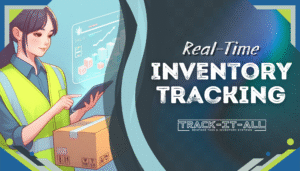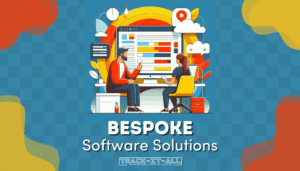In the competitive landscape of talent acquisition, recruitment software functionality stands as a cornerstone in streamlining complex hiring activities. With organizations in South Africa increasingly relying on technology to source and secure top talent, understanding how recruitment software contributes to this process is essential. As businesses grapple with an ever-changing marketplace, the need for clear methods of understanding recruitment software processes takes on heightened importance.
Fusing automation with advanced data analytics, recruitment software reshapes the hiring experience for both employers and candidates. Whether it’s managing vast numbers of applications or enhancing communication channels, these systems offer a robust solution to the pressing question—How does a recruitment software work? By automating the initial steps of the recruitment cycle, recruiters can redirect their focus to engaging the most promising prospects, thus positioning companies to harness the full potential of their human capital investments.
Key Takeaways
- Recruitment software automates and optimizes the hiring process, enhancing efficiency and outcomes.
- Key functionalities support streamlined task management and data-driven decision-making.
- Automation in recruitment software saves valuable time by handling repetitive tasks with precision.
- A user-friendly interface improves software adoption and simplifies operations for HR professionals.
- Understanding recruitment software allows for better alignment with organizational hiring goals.
- Comprehensive analytics offer crucial insights for continual improvement in recruiting strategies.
Introduction to Recruitment Software in Modern Hiring
In a world where talent acquisition has become increasingly sophisticated, the role of recruiting software operations has been elevated from a mere facilitation tool to a cornerstone of efficient hiring practices. The modern recruiter is often seen as a technologist, leveraging software solutions to drive productivity and strategic decision-making in the quest for top-tier talent. This shift has made a deep knowledge of recruitment software features explanation an indispensable part of a recruiter’s expertise.
The Evolution of Recruitment Expertise
The recruitment landscape has undergone a significant transformation, migrating from traditional manual processes to technology-driven methodologies. Nowadays, it’s imperative for HR professionals to possess a comprehensive understanding of how recruitment software supports their operations. As a conduit for innovative recruiting strategies, these tools effectively manage the complexities of talent scouting and engagement.
Defining Recruitment Software and Its Impact
Recruitment software stands out as a multifaceted ensemble of tools that elevates the hiring process from start to finish. By orchestrating various aspects of recruitment, such as job distribution, applicant tracking, and communication, these platforms redefine what it means to recruit in the digital age. The impact of such software on an organization’s talent acquisition efforts is profound, transforming the very blueprint of workforce planning.
| Feature | Function | Impact on Recruitment |
|---|---|---|
| Automated Job Postings | Disseminates openings across various platforms | Expands reach and reduces time-to-fill |
| Candidate Screening | Filters applicants based on pre-set criteria | Enhances quality of hires |
| Interview Scheduling | Coordinates interviews dates and times | Streamlines the interview process |
| Communication Tools | Facilitates interaction with candidates | Improves candidate experience and engagement |
The efficacy of recruitment software features explanation goes beyond simply automating tasks—it encompasses a strategic re-engineering of the recruiting software operations to meet modern demands. It is this holistic approach to recruitment technology that acts as the fulcrum for organizations aiming to remain competitive in the ceaseless pursuit of talent.
How does a recruitment software work?
The intricate process of successfully managing candidates and streamlining hiring tasks finds its solution within the technological advancements of recruitment software. To aid in understanding the recruitment software process, one must delve into the multi-layered stages of its operation.
A recruitment software workflow essentially begins with the automated distribution of job advertisements. This vital step is integrated into countless platforms simultaneously, magnifying the reach to potential candidates manifold. Following this, an intelligent system kicks in for resume parsing—efficiently sifting through large volumes of applications to extract data meaningful to the hiring process.

Aligned with these operations, recruitment software workflow illustrations depict how collaborative tools within the software promote an interconnected hiring team environment. Decision-making becomes less of a task and more of an informed, collective journey towards procuring the best talent available.
Synchronizing with a diverse range of Human Resources systems is another cornerstone functionality. By becoming a centralized hub for applicant data, recruitment software guarantees that candidate information is not only easily accessible but also manageable without data loss or misinterpretation, thus bolstering the organizational capabilities of the HR department.
Through meticulous incorporation of analytical prowess, recruitment software is indispensable in decoding metrics of success and areas needing improvement—culminating in informed decisions that carve the path to superior hiring results.
- Job Ad Posting Automation
- Resume Parsing and Screening
- Collaborative Hiring Tools
- Integration with HR Systems
- Advanced Analytical Insights
Through practical application and visual guides, systems encompassing these features yield insights pivotal to not just understanding the recruitment software process, but also to mastering it. Resultantly, the streamlining effect materializes a more refined, effective, and ultimately successful recruitment strategy. Let’s explore the enactment of these elements within the workflow through an illustrative table:
| Functionality | Description | Impact on Recruitment Process |
|---|---|---|
| Automated Job Ad Distribution | Simultaneously posts job openings across multiple platforms | Expands reach and reduces time spent on manual postings |
| Intelligent Resume Parsing | Utilizes algorithms to identify relevant candidate information | Streamlines the initial candidate selection phase |
| Collaborative Hiring Tools | Facilitates shared access and input on candidate evaluations | Enhances team decision-making and efficiency |
| HR Systems Integration | Centralizes candidate data for easy accessibility and management | Eliminates data silos and simplifies candidate tracking |
| Advanced Analytics | Provides data-driven insights into hiring practices | Guides strategic improvements across the recruitment cycle |
Understanding the richness and complexity of the recruitment software process and its depiction via a workflow illustration sheds light on the profound impact such systems have on modern hiring strategies. A strategic blend of automation, collaboration, integration, and analysis not only transforms the HR department’s approach but also elevates the hiring standard to unprecedented levels.
Core Functionalities of Recruitment Software
When it comes to improving the efficiency and efficacy of recruitment processes, understanding the recruitment software functionality is essential. By leveraging advanced features, HR teams are able to automate a wide range of repetitive tasks, facilitating better time management and improving overall productivity in the quest for top talent.
Automating Repetitive Tasks and Time Management
One of the primary features that underscore the recruitment software features explanation pertains to its ability to automate tasks that conventionally consumed a recruiter’s time. These tasks include but are not limited to the screening of resumes, sourcing candidates from various job boards, and managing the scheduling of interviews and follow-ups.
| Task | Manual Time Consumption | With Recruitment Software Automation |
|---|---|---|
| Resume Screening | Several hours per position | Minutes to process hundreds of resumes |
| Candidate Sourcing | Hours spent on multiple platforms | Consolidated sourcing at a click |
| Interview Scheduling | Hours coordinating through emails/calls | Automated scheduling based on availability |

Integration Capabilities with Other Software Tools
A vital aspect of recruitment software functionality lies in its capacity to integrate with other essential software tools used within the HR domain. Having open APIs and a partner ecosystem allows for the recruitment software to collaborate effectively with tools such as HRIS, payroll software, and performance management systems, enhancing interoperability and workflow agility.
Below is a look at how integration can streamline processes:
- Data Synchronization – Reducing double-entry and ensuring that candidate data is consistent and up-to-date across platforms.
- Enhanced Candidate Experience – Providing a seamless experience from application to onboarding.
- Reporting and Analytics – Combined data offers comprehensive insights for better strategic decisions.
In conclusion, dissecting the recruitment software features explanation sheds light on just how crucial these tools are for modern HR departments. By automating routine tasks and integrating with a range of other systems, recruitment software not only saves time but also provides a strategic advantage in the competitive landscape of talent acquisition.
The Power of Streamlining Recruitment Operations
In today’s competitive hiring landscape, efficiency is key, and recruitment software is the linchpin in revolutionizing the way organizations approach talent acquisition. As recruitment software workflow illustration makes evident, by optimizing various steps within the hiring process, this technology serves as a catalyst for organizational growth, endowing recruiters with the means to quickly identify and engage with the best candidates. Streamlining operations through advanced recruitment software not only propels the speed of the hiring cycle but also elevates the overall quality of talent secured.
Facilitating Efficient Candidate Screening Processes
At the heart of recruiting software operations lies the pivotal task of candidate screening. Modern recruitment software leverages sophisticated algorithms to filter through the deluge of applications, skillfully discerning potential hires that meet the precise needs of the organization. This expeditious and precise vetting is instrumental in enhancing the quality of candidate selection and significantly reduces the hours spent on sifting through resumes manually. This strategic automation allows recruiters to focus their efforts on engaging with top-tier candidates, thus optimizing their workflow and delivering more qualitative hires.
Advancing Collaborative Hiring Practices
Another cornerstone of recruitment software’s efficacy is its ability to foster collaboration across various departments involved in the hiring process. This software centralizes communications and feedback regarding candidate profiles, ensuring a transparent and unified approach to decision-making. As a result, the outcome is a more harmonious, well-informed recruitment practice that not only accelerates timelines but also heightens the caliber of new hires. This collaborative environment, powered by recruitment software, leads to stronger team compositions and synergized workforce expansions, integral to any organization’s success.







